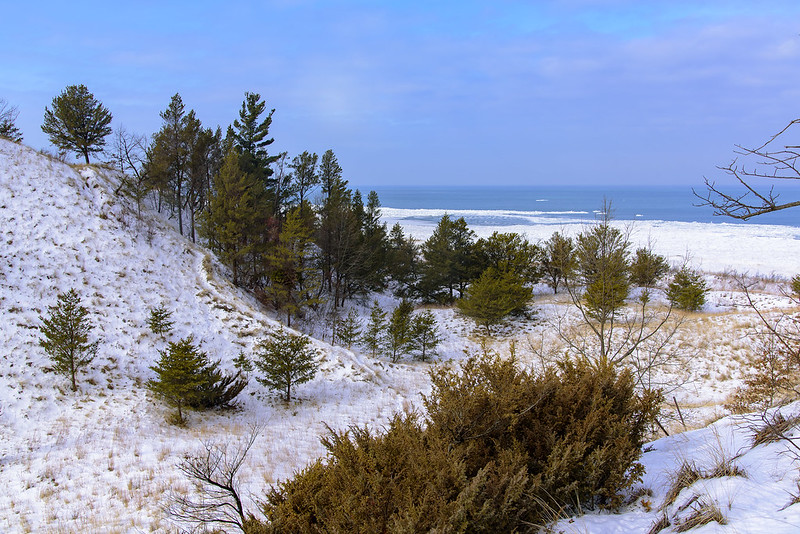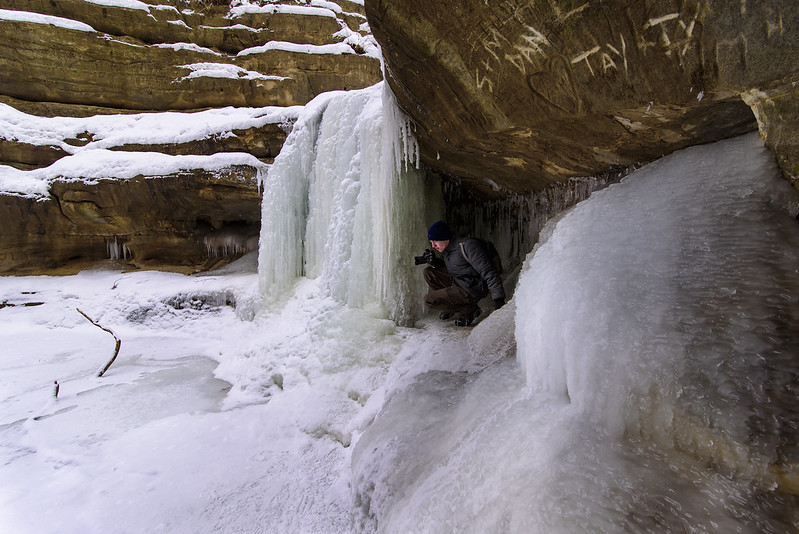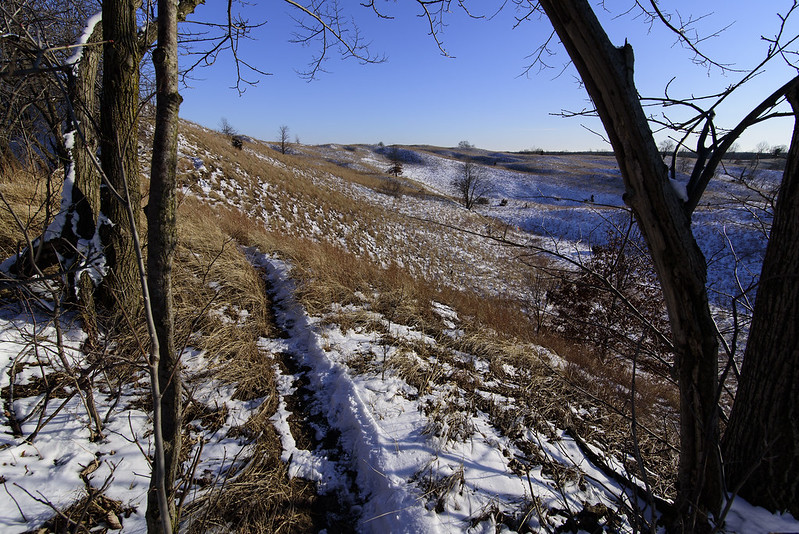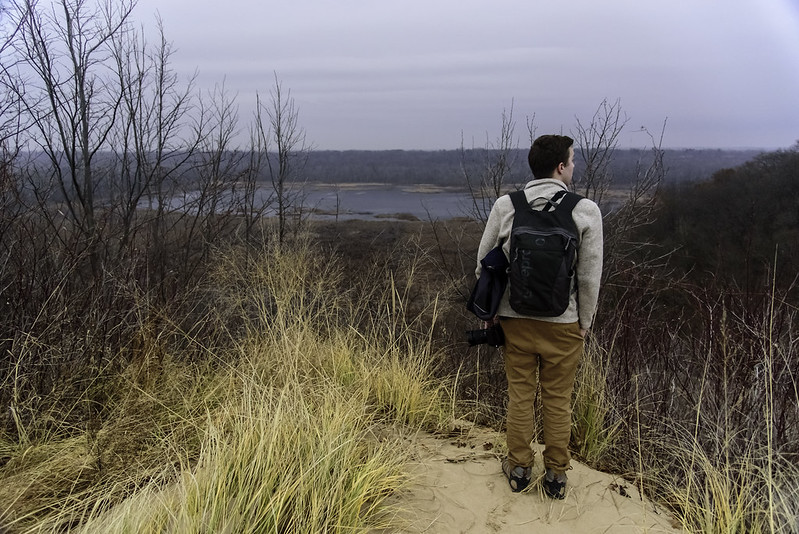
A 60 degree difference between last Wednesday and this Sunday allowed us to explore more of Starved Rock State Park's frozen waterfalls. Low temperatures of -24 F helped freeze the waterfalls solid in just a few days. Today's temperatures in the 40s began the melting process, but the cool canyons still retained most of their ice.
An unusual sight for me was the white frost on the walls of Tonti Canyon. I think it is due to the very cold temperatures a few days ago, then the warm temps yesterday and today. The warm air condensed on the cold canyon walls, and created frost. It certainly gave the canyons another layer of contrast.

In just a week's time, the main waterfall in Tonti Canyon completely froze from top to bottom. Take a look at
this post to see what the waterfall looked like last week. I'd estimate the height of the waterfall at around 60 feet, and if the cold comes back soon, this icefall will continue to build in thickness and perhaps allow ice climbers a chance at tackling the difficult climb to the top.

While being careful of the hanging icicles above, we wandered behind the icefall for a view of the backside. Unlike the thinner ice columns of LaSalle Canyon, this ice isn't as transparent, but it does offer a look at the beautiful details and patterns in the ice.
Looking closely to the left of the ice column, you can spot the second icefall of Tonti, a bit smaller, and not yet connected from top to bottom.
The Tonti Canyon bridge has been closed for quite some time, forcing visitors to take a 15 minute detour back through LaSalle Canyon. It's never a bad thing to visit this canyon twice in an afternoon, but the longer hike takes some time away from exploring other canyons along the way. I'm not sure what the State is waiting for - the bridge can be repaired for very little money, and very little time. Unless the bridge isn't the problem, perhaps it's the trail itself which seems a bit narrow just before the bridge. Either way, it's time something is done to improve a beautiful trail in Illinois' second largest attraction.
 The Michigan City, Indiana East Pierhead Lighthouse seen over the shelf ice on the Lake Michigan shore. This lighthouse is seen from Central Beach, Part of the new Indiana Dunes National Park, formerly the Indiana Dunes National Lakeshore. The beach is showing signs of erosion, in fact, many of the trails on the dune ridges are long gone, they tumbled into the lake years ago. The shelf ice helps protect the dunes during the windy winter months, keeping the waves from washing away any more sand. Perhaps the park's new status will aid in beach restoration processes and these sand-starved beaches will once again become wide.
The Michigan City, Indiana East Pierhead Lighthouse seen over the shelf ice on the Lake Michigan shore. This lighthouse is seen from Central Beach, Part of the new Indiana Dunes National Park, formerly the Indiana Dunes National Lakeshore. The beach is showing signs of erosion, in fact, many of the trails on the dune ridges are long gone, they tumbled into the lake years ago. The shelf ice helps protect the dunes during the windy winter months, keeping the waves from washing away any more sand. Perhaps the park's new status will aid in beach restoration processes and these sand-starved beaches will once again become wide.  Over the past few weeks, the ice on the lake has grown and melted. The weather over the next few weeks will determine how much the shore will change during the remaining weeks of winter.
Over the past few weeks, the ice on the lake has grown and melted. The weather over the next few weeks will determine how much the shore will change during the remaining weeks of winter.


















































